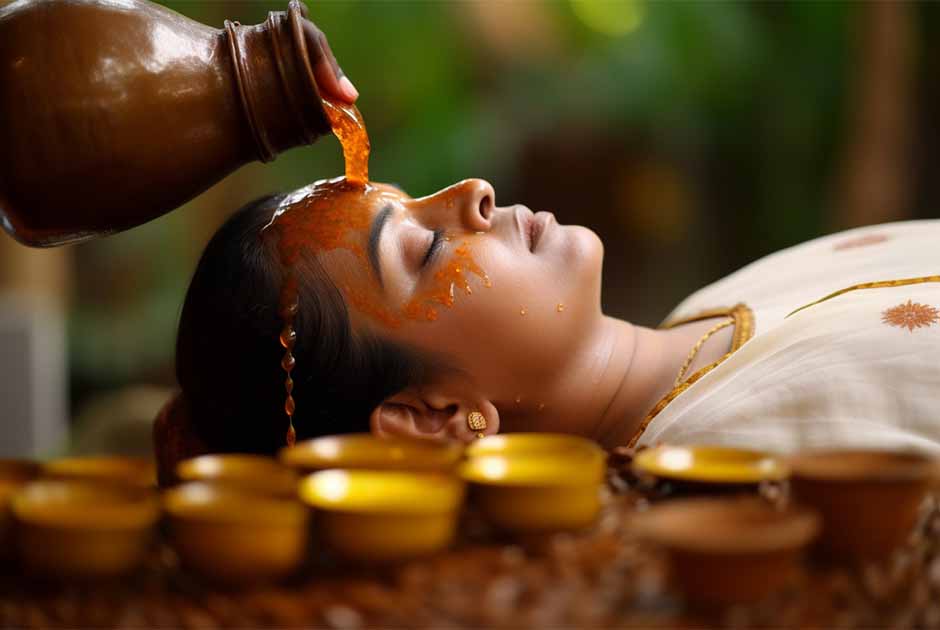Ancient Purification Rituals: Exploring Cleansing and Spiritual Renewal
Throughout history cultures from around the world have recognized the importance of purification rituals to cleanse and renew the body, mind, and spirit. These ancient practices were deeply embedded in the beliefs of a multitude of religions as well as different regions' cultural traditions and spiritual ideologies. From the banks of the River Nile in Ancient Egypt to the shores of Japan and the heart of Australia, countless civilizations have devised unique and elaborate rituals aimed at achieving spiritual harmony as well as cleansing individuals, spaces, and objects of impurities. While many of these rituals have disappeared over the ages, some persist to this day. Here are eight remarkable ancient purification rituals from diverse corners of the world, each reflecting the profound spiritual wisdom and timeless customs of their respective societies.
Purification Rituals- Cleansing Mind, Body, and Soul
1. Ancient Egyptian Purification Rituals- Cleanliness Before Godliness
As a civilization, the Ancient Egyptians were pretty obsessed with cleanliness, and keeping clean was deeply ingrained in their religious beliefs. As such, the Egyptians carried out a whole host of different types of cleansing rituals. There was ritual washing, the use of incense and fragrance, anointing with oils, fasting, sacrifices, and magical spells and incantations to name just a few.

Egyptian papyrus depicting purification ritual. (erhan dayı/Adobe Stock)
But two of the most important purification rituals (considered vital preludes to engaging in spiritual activities or entering holy spaces like temples) were ritual washing and ritual bathing. Very often these rituals involved a purification process through immersion in the sacred Nile River.
Those seeking spiritual cleansing would undergo a ritual bath, symbolizing the washing away of physical impurities as well as negative energies. The flowing waters of the Nile, revered as a life-giving force, were believed to possess divine properties that could purify the soul and connect the individual with the gods. The ritual's significance extended beyond personal purification, as it also held immense spiritual importance in the journey toward the afterlife.
Of course, not everyone lived next to the Nile and could just take a quick dip. This is why Nile water was sometimes used in combination with oils and other substances for anointing ceremonies. This anointing was believed to confer protective and purifying properties on the individuals involved.
By undergoing these sacred rites, the ancient Egyptians sought to attain spiritual harmony and maintain their sacred connections with the divine forces that governed their lives. Today, archaeological evidence and historical accounts provide valuable insights into the profound reverence the Egyptians held for these timeless purification rituals.
- Rare ritual jars found buried under ancient ruins in Japan intended to purify, bring eternal youth
- Ancient Healing Methods Offer an Alternative Paradigm in Health
2. Greek Eleusinian Mysteries- The Secrets of Purification
The Greek Eleusinian Mysteries, held annually in the town of Eleusis, were among the most renowned and secretive religious rituals of ancient Greece. These mysteries were dedicated to Demeter, the goddess of agriculture, and her daughter Persephone and symbolized the cycle of life, death, and rebirth.
The Eleusinian Mysteries consisted of two parts, the Lesser and the Greater Mysteries. The Lesser Mysteries were held in springtime, around February and March, in Athens and acted as a preliminary initiation to prepare the candidates for the Greater Mysteries that would take place later in the year at Eleusis.
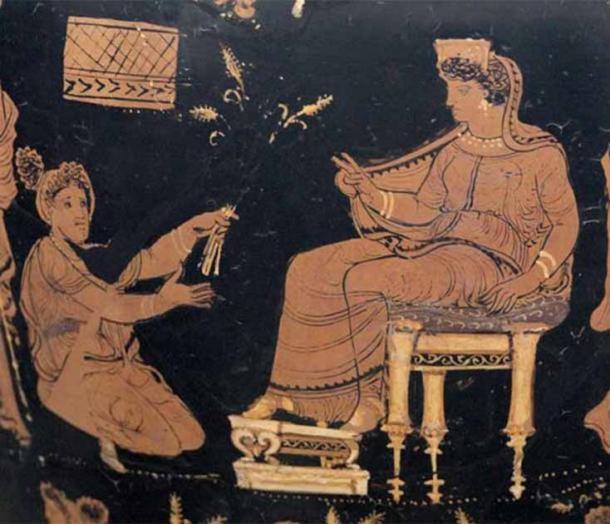
Demeter, enthroned and extending her hand in a benediction toward the kneeling Metaneira who offers the triune wheat that is a recurring symbol of the mysteries. (Public Domain)
While not much is known about the Lesser Mysteries (they are called mysteries after all) we do know that participants underwent purification rituals and received preliminary teachings about the mysteries that would be revealed in the Greater Mysteries. The purpose of these purification rituals was to remove any impurities or sins that might hinder the initiates' access to divine knowledge and spiritual enlightenment.
The exact details of these rituals were zealously guarded but historians believe they may have included bathing in the sea, fasting, abstaining from certain foods, and more than likely a period of sexual abstinence. Additionally, candidates might have engaged in prayers, sacrifices, and other acts of devotion to purify their souls and demonstrate their commitment to the goddesses Demeter and Persephone.
3. Roman Ritual of Lustratio- A Group Effort
Much like the Greeks and Egyptians, the Romans also indulged in a range of different purification rituals. One of the most important was the Ritual of Lustratio, a solemn purification ceremony with deep-rooted significance in ancient Roman religious practices.
The term “lustratio” comes from the Latin word “lustrare” which means “to purify” or “to cleanse.” Much like the Egyptians, the Romans would often carry out this ritual before important religious occasions and events.
While many purification rituals tended to focus on the individual, the primary purpose of the lustratio ritual was to ensure the well-being and prosperity of the community, as well as to purify individuals and places from any perceived taint or malevolent forces. It could even be used to safeguard entire cities and armies all at once.
There were different variations of the rituals, but the ceremony typically involved a procession of people passing through or around purifying elements like fire or smoke, or having holy water, often mixed with herbs or other substances, sprinkled, or poured over them (or whatever object was being purified). These people often underwent various preparatory acts to purify themselves. This might involve fasting, abstaining from certain activities, and taking ceremonial baths.
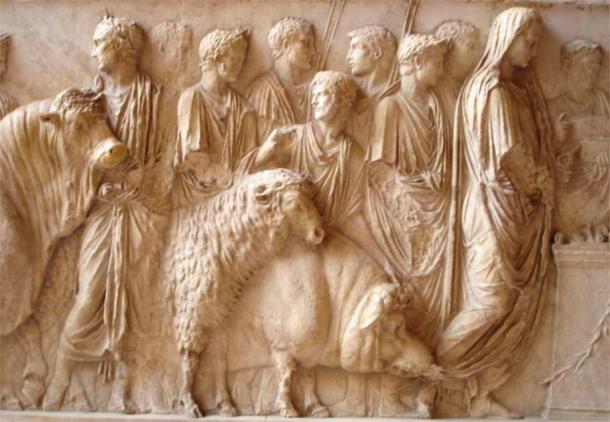
The Lustratio ritual included a procession and in some circumstances the sacrifice of animals. (Public Domain)
Lustratio was an important part of Roman public life and was often performed during critical junctures, such as before embarking on military campaigns, after the conclusion of notable events, or during times of collective crisis. The Romans considered these purification rituals crucial for maintaining the favor of the gods and ensuring the welfare of the state and its people.
4. Mayan Sweat Lodge Ceremony- Sweat Away Your Sins
When we think of Mayan rituals, we usually think of bloody human sacrifices but actually they had their fair share of bloodless purification rituals too. The most important of which was the Mayan Sweat Lodge Ceremony, also known as the Temazcal ceremony.
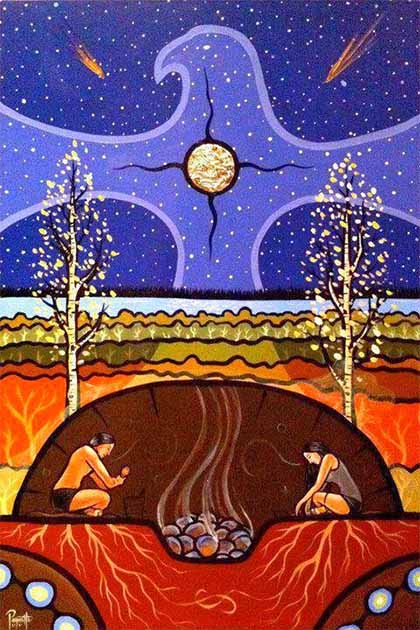
Temazcal, ancient Mesoamerican ritual for spiritual renewal and cleansing. (Casiopea/CC BY-SA 4.0)
The ritual was a sacred and revered practice among the ancient Maya civilization and has lived on among the other indigenous peoples of Mesoamerica. The ritual was carried out in a “Temazcal”, which means “house of heat” in Nahuatl, the language of much of Mesoamerica. This is basically a sweat lodge made of stone or adobe bricks.
Participants would gather inside this sacred space which was heated by volcanic rocks that were placed in its center. Water infused with medicinal herbs was then poured onto the stones, producing steam and intense heat. Not too different from what many of us do at the gym today.
Unsurprisingly, this made everyone sweat profusely. It was believed this excessive sweating helped to purify the body physically and spiritually, releasing negative energies and helping participants to attain a state of balance and harmony. The ceremony was usually guided by a shaman who led the ritual via chants, prayers, and spiritual guidance.
In modern times, the Temazcal ceremony continues to be practiced by various indigenous communities in Mexico and other parts of Central America, as well as by people interested in exploring traditional healing and spiritual practices. In particular, the ceremony has gained popularity among wellness and spiritual retreats, attracting individuals seeking a profound and transformative experience.
5. Japanese Misogi- Purified by Nature
In Japan, one of the most popular purification rituals is known as the Misogi (禊) ritual which can be translated as “ritual purification.” The tradition dates back centuries and is deeply rooted in the Shinto religion. It is a spiritual practice aimed at cleansing the mind, body, and spirit of impurities and negative influences to achieve a sense of renewal and spiritual clarity.
The Shinto religion enjoys close ties to the natural world and so, Misogi is usually performed in natural settings, such as rivers, waterfalls, or the sea, as water is considered a sacred and purifying element in Shinto beliefs. It is believed that by immersing oneself in running water physical and spiritual impurities are washed away. This allows believers to establish a deeper connection with the kami, minor spirits/ deities that inhabit nature.
Participants enter the freezing water (often under a waterfall) and use the shock to help them begin focusing on their breathing. They then begin to meditate, the icy water helping them to achieve a heightened state of awareness.
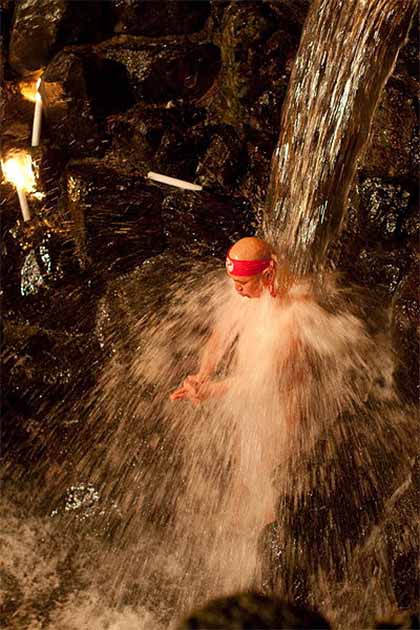
Misogi Harai at Tsubaki Jinja Japan. (Takashi Ueki/CC BY-SA 3.0)
Like many of the rituals on this list, Misogi is not limited to a specific occasion or time; it can be performed individually or as part of a group during festivals, ceremonies, or personal spiritual practices. In fact, it is still a popular part of modern Japanese life and has influenced other aspects of Japanese culture and spiritual practices, including martial arts and various forms of meditation and mindfulness.
6. Native American Smudging Ceremony- Smoking Indoors
The Native American Smudging Ceremony is a sacred ritual performed by various indigenous tribes across North America. The ritual can change substantially from tribe to tribe, with each having its own unique practices, however, some elements tend to be universal.
These purification rituals usually involve burning sacred herbs, such as sage, cedar sweetgrass, or tobacco in a “smudging bowl” or abalone shell (a type of marine snail). The smoke produced is then gently fanned over whatever is being cleansed, whether it be a person, an important space, or a sacred object. The smoke serves two purposes. Firstly, it is thought to purify them from negative energies, thoughts, and spirits. And secondly, it is also believed that smoke can act as a messenger, carrying people’s prayers to the heavens.
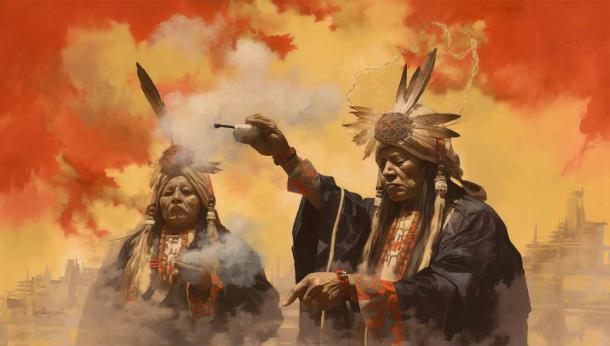
Sacred Smudging purification ritual in Native American communities. (Julien/ Adobe Stock)
As a purification ritual, the smudging ceremony is performed for various purposes, such as purifying individuals before momentous events or ceremonies, cleansing living spaces or sacred areas, blessing new homes, and offering healing or prayers for the sick. Today, however, it isn’t just Native Americans who carry it out, smudging has gained popularity beyond Native American communities, as it is recognized for its spiritual and holistic benefits.
7. Hindu Panchakarma- A Very Thorough Cleansing
Of all the rituals on the list, the Panchakarma ritual is probably one of the most grueling sounding. The term "Panchakarma" translates to "five actions" or "five treatments" in Sanskrit, referring to the five therapeutic procedures involved in this holy cleansing and detoxification regimen.
The ritual is designed to balance the three doshas (Vata, Pitta, and Kapha) in the body and remove accumulated toxins (ama) to restore optimal health and vitality. These are similar to the old belief in the four humors, and it is believed that imbalances in the doshas and the presence of toxins contribute to various health issues and diseases.
The first of these treatments is Vamana (emesis) which involves therapeutic vomiting. Then there is Virechana (Purgation) during which participants take powerful laxatives. This is followed by Basti (Enema) which essentially involves washing away the remnants of Virechana. Next up is Nasya (Nasal Administration) which cleans the nasal passages. The final stage is Rakta Moksha (bloodletting), the process of letting out a small amount of blood from specific areas to remove impurities from the blood and balance the dosha.
The ritual changes from person to person and typically begins with a thorough consultation with an Ayurvedic practitioner who assesses the individual's doshic imbalances and health conditions. Based on this assessment, a personalized Panchakarma treatment plan is formulated, which includes the appropriate combination of the five procedures.
- Ancient Spas: The Lifegiving Power of Water and the Gods
- Tlazolteotl: An Ancient Patroness and Purifier for all things Filthy
8. Jewish Mikveh- A Purifying Bath
The Mikveh is a ritual bath used for a range of purposes in Judaism but is mainly used for purification. The practice is deeply ingrained in Jewish tradition and has been observed by both men and women for thousands of years. The word comes from the Hebrew root "k-v-h," meaning "to gather" or "to collect," and it refers to the gathering of water for the purpose of immersion.
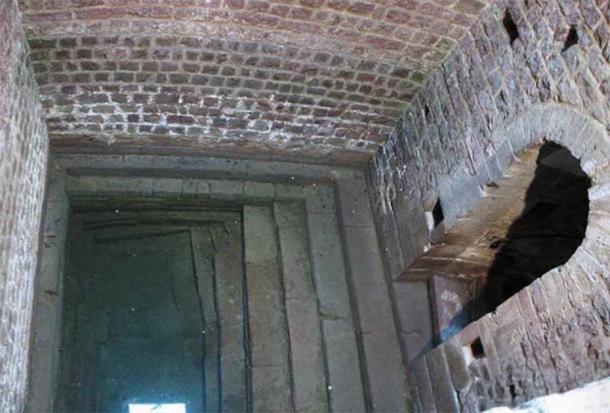
Pool of a medieval Mikveh in Speyer, used to achieve ritual purity. Dates back to 1128. (Chris 73 / Wikimedia Commons)
In many ways, the Mikveh is similar to the Shinto Misogi ritual. The Mikveh is a pool of natural, flowing water or a specially constructed bath with natural water sources. While it’s mainly used for the ritual purification of individuals, it can also be used to cleanse certain objects and utensils which are used in specific religious ceremonies.
Like many other cleansing rituals, the Mikveh is often carried out for significant life events, such as preparing for marriage, after menstruation, following childbirth, and during the process of conversion to Judaism. A little like baptism in Christianity, the act of immersion in the Mikveh represents a symbolic rebirth, washing away impurities and granting the individual a renewed spiritual state.
The Mikveh holds profound spiritual significance in Judaism, serving as a means of renewal, spiritual growth, and connection with God. This ancient and sacred tradition remains an essential aspect of Jewish religious and cultural practices, upholding the enduring significance of ritual purity and spiritual sanctification in Jewish life.
Conclusion
Many of these purification rituals are startlingly similar to each other, revealing the universal human desire for spiritual purity and renewal. These age-old practices, deeply intertwined with cultural and religious beliefs, have shaped the spiritual identities of numerous civilizations.
These rituals also highlight the precarious relationship between religion and science. All of these rituals predate our modern understanding of hygiene by hundreds of years but show that even without that knowledge, our ancestors were keenly aware of the importance of being clean. As some of these rituals are adopted by modern-day practitioners of holistic medicine it’s important to remember where they came from and be mindful of their cultural heritage.
Top image: The ancient purification ritual of an Ayurvedic treatment, a millenary medicinal practice balances the 3 doshas in the body. Source: Катерина Євтехова/Adobe Stock
References
Bocking. B. 1997. A Popular Dictionary of Shinto. Curzon
Editor. 2021. National Indigenous History Month: Smudging. Available at: https://telusworldofscienceedmonton.ca/learn/indigenous-history-month-smudging/
Editors. 2023. Mikveh. Available at: https://www.britannica.com/topic/mikvah
Linderski. J. 2016. Lustration. Available at: https://oxfordre.com/classics/display/10.1093/acrefore/9780199381135.001.0001/acrefore-9780199381135-e-3800
Wujastyk. D. 2003. The Roots of Ayurveda: Selections from Sanskrit Medical Writings. Available at: https://books.google.com.tr/books?id=sJOEMwrVyRcC&lpg=PR1&vq=The%20Roots%20of%20Ayurveda%3A%20Selections%20from%20Sanskrit%20Medical%20Writings.&hl=tr&pg=PR1#v=snippet&q=The%20Roots%20of%20Ayurveda:%20Selections%20from%20Sanskrit%20Medical%20Writings.&f=false
















